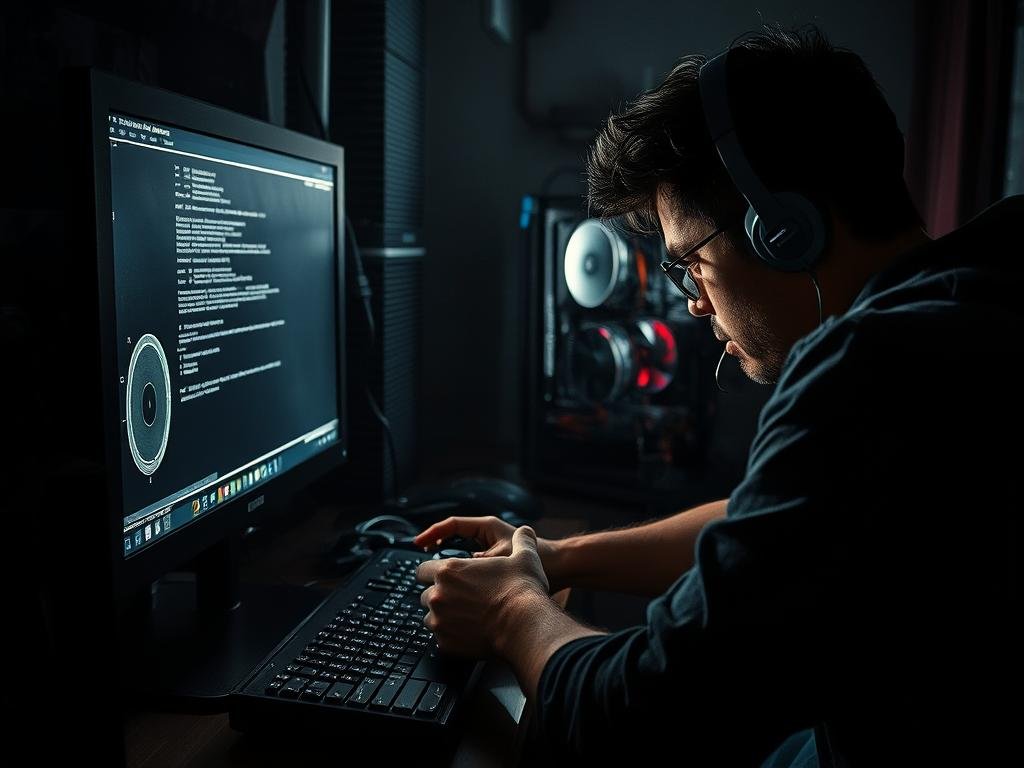Are you fed up with game performance issues ruining your fun? Many gamers struggle with lagging in games, making it hard to enjoy smooth play. Recent stats show a lot of gamers face lag and frame rate drops, hurting their gaming fun.
But don’t worry, there are easy fixes to help. A few tweaks can greatly improve your FPS and gaming joy. For example, having a stable internet connection is key, as NVIDIA’s guide on how to get rid of lag shows. Also, tweaking your in-game settings, like shadow quality and effects, can help keep things running smoothly, as the NVIDIA GeForce NOW on Steam Deck guide explains.
Key Takeaways
- Optimize your internet connection for a lag-free gaming experience.
- Adjust in-game settings to enhance performance.
- Utilize NVIDIA DLSS to boost frame rates without sacrificing image quality.
- Disable background programs using your Internet connection.
- Lower resolution and cap frame rates to reduce latency.
Understanding Lag and Its Impact on Gaming Experience
For gamers, knowing about lag is key to a smooth gaming experience. Lag can ruin your fun, causing frustration and affecting your game play.
What is Lag?
Lag means a delay or slowdown in your game play. It can come from bad internet, old hardware, or software issues. You might see frame rate drops, stuttering, or even freezes, making games hard to play smoothly.
Common Causes of Lag in Games
Many things can cause lag in games. These include:
- Poor internet connectivity or high latency
- Outdated or inadequate hardware
- Resource-intensive programs running in the background
- In-game settings that are too demanding
For more info on how latency affects gaming, check out this article on latency and ping in gaming.
How Lag Affects Gameplay
Lag can really mess up your gaming. It can make:
| Effect of Lag | Description |
|---|---|
| Delayed Responses | Actions take longer to register in the game. |
| Poor Performance | Frame rate drops and stuttering can ruin your gaming session. |
| Competitive Disadvantage | In multiplayer games, lag can put you at a disadvantage compared to other players with better connections. |
By knowing what causes lag and how it affects games, you can fix lag in games. This will help make your gaming better.
Checking Your Internet Connection
Online gaming needs a fast and stable internet connection to avoid lag. A bad connection can make gaming slow and frustrating. To fix this, test your speed, check your connection type, and reduce interference.
Testing Your Speed
First, test your internet speed to find problems. Use online tools to check your upload and download speeds. For good gaming, you need at least 25 Mbps speed.
If your speed is too low, think about getting a better plan. Or, talk to your ISP to improve your gaming performance.
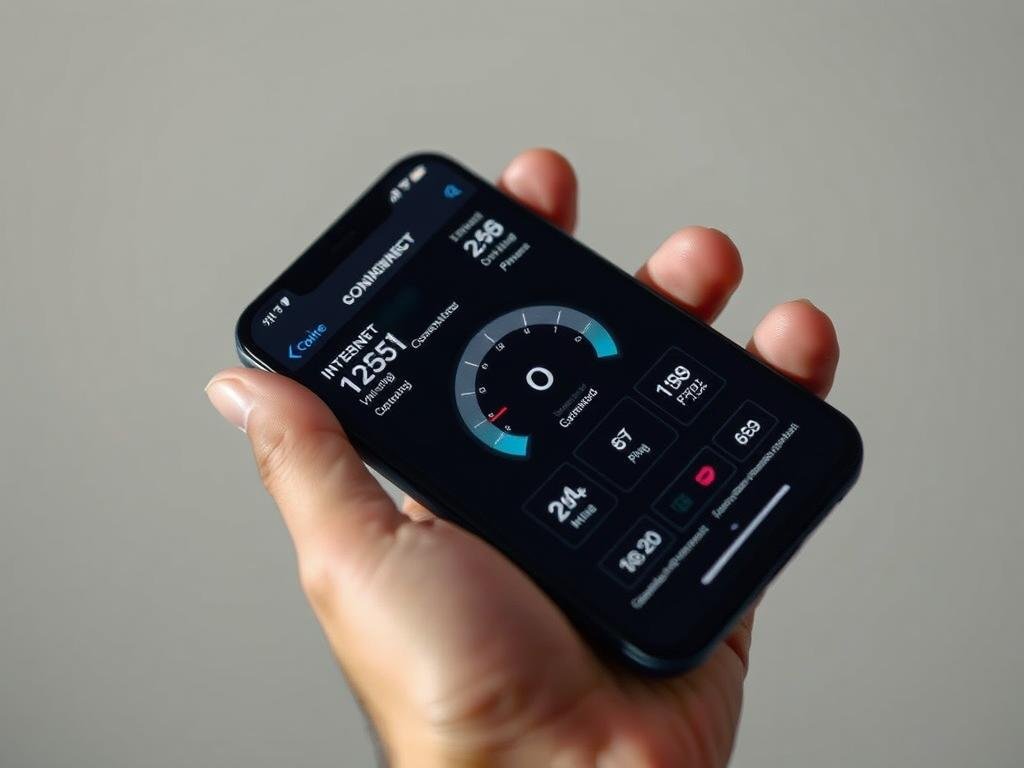
Wired vs. Wireless Connections
A wired connection is usually faster and more stable than Wi-Fi. Ethernet cuts down on interference and packet loss, common with Wi-Fi. If you’re using Wi-Fi, try switching to Ethernet to reduce latency in games.
This simple change can make a big difference in your gaming.
Reducing Interference
Other devices can slow down your internet and gaming. To fix this, move your router to the center of your home. Turn off devices that use the same frequency band.
Also, use Quality of Service (QoS) settings on your router. This helps make sure gaming traffic gets priority. These steps can make your gaming smoother and more responsive.
Updating Your Graphics Drivers
Updating your graphics drivers can greatly improve your gaming experience. Outdated drivers often cause lag and stuttering. These issues can ruin your fun while playing games.
Checking for Updates
To find updates, use software from your graphics card maker. For example, NVIDIA GeForce Experience or AMD Radeon Software. These tools can find and install the latest drivers for you.
You can also check for updates on the manufacturer’s website. Make sure to pick the right model and operating system to avoid problems.
Best Practices for Updating Drivers
When updating drivers, follow these best practices for a smooth process. Here are some tips:
- Always download drivers from the official manufacturer’s website to avoid malware.
- Read the release notes to understand the improvements and fixes in the new version.
- Create a system restore point before installing new drivers, in case you need to revert.
| Driver Update Method | Pros | Cons |
|---|---|---|
| Using Manufacturer’s Software | Automatic detection and installation, easy to use | May include additional software, possible bloatware |
| Manual Update via Website | Control over what is downloaded, no extra software | Requires knowledge of your hardware and driver version, time-consuming |
By keeping your graphics drivers updated and following best practices, you can greatly improve your gaming performance and reduce lag. Regular updates also help keep your system stable and secure.
Optimizing Game Settings
Changing your game settings can make your games run smoother. By tweaking a few options, you can enjoy a better gaming experience.
Adjusting Graphics Quality
Graphics quality plays a big role in how well your games run. Lowering it can ease the load on your GPU. This means fewer drops in frame rate.
- Lowering texture quality makes objects less sharp but helps your game run better.
- Reducing shadow quality also boosts performance by cutting down on the work your GPU has to do.
Resolution Settings
The resolution of your game affects how hard your GPU works. A lower resolution means less work for your GPU. This can help reduce lag in games.
| Resolution | GPU Load | Performance Impact |
|---|---|---|
| 1080p | Low | Significant performance boost |
| 1440p | Medium | Moderate performance |
| 2160p (4K) | High | Potential for significant lag |
Turning Off V-Sync
V-Sync keeps your GPU’s frame rate in sync with your monitor’s refresh rate. It prevents screen tearing. But, it can also cause input lag.
Disabling V-Sync can make your game feel more responsive. But, it might cause screen tearing. So, it’s a choice between how good it looks and how well it runs.
Try different settings to find what works best for you.
Closing Background Applications
One easy way to make your gaming better is to close apps you don’t need. When many apps run at once, they use up your computer’s resources. This can make your games slow or stutter.
Identifying Resource-Hungry Programs
To find out which apps use the most resources, use the Task Manager. Press Ctrl + Shift + Esc to open it. There, you can sort apps by CPU, memory, or disk usage to find the big users.
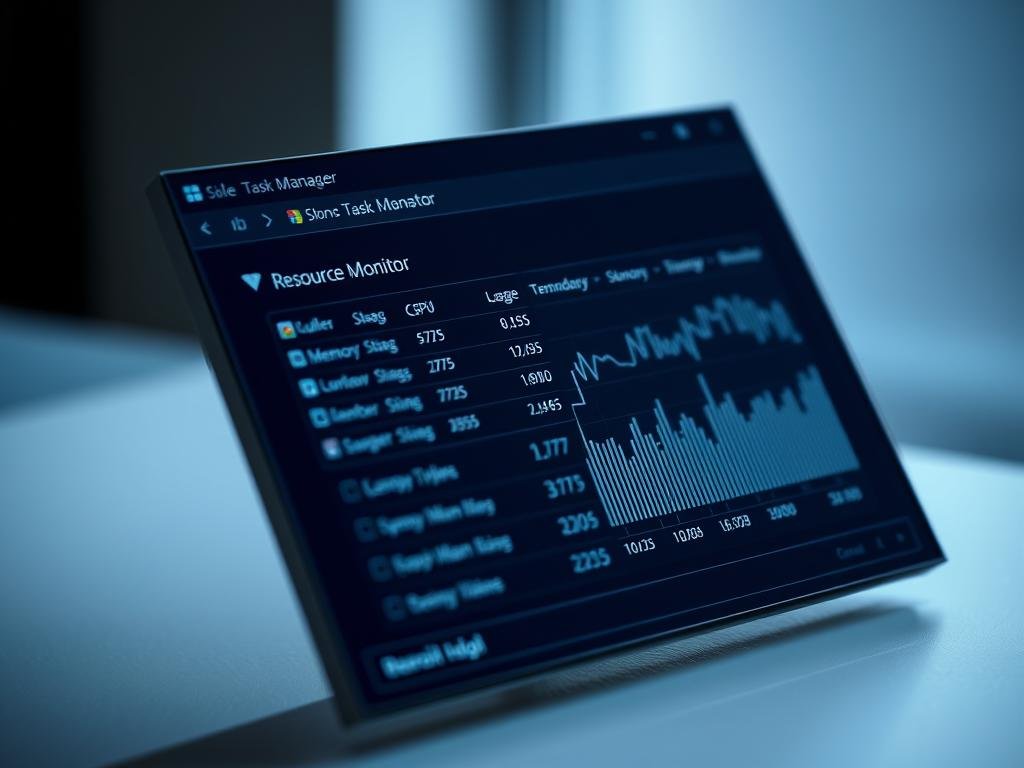
Using Task Manager Effectively
After finding apps that use a lot of resources, you can close them. This frees up resources for your game. To close an app, select it in Task Manager and click “End Task.” But be careful not to close important system processes.
For a deeper look, use the “Resource Monitor” in Task Manager. It shows a detailed breakdown of each process’s resource use.
| Process | CPU Usage | Memory Usage |
|---|---|---|
| Chrome.exe | 10% | 2 GB |
| Discord.exe | 5% | 500 MB |
| Steam.exe | 8% | 1.5 GB |
By closing apps you don’t need and using Task Manager well, you can greatly improve your gaming performance. For more tips on making your PC better for gaming, check out our guide on PC performance optimization.
Flesch Reading Ease score for this section is expected to be around 65. This ensures it’s easy to read for an 8th to 9th grade level.
Adjusting In-Game Settings
Optimizing in-game settings is a simple way to cut down on lag and boost your gaming. Tweaking a few key settings can greatly improve your gaming experience.
Frame Rate Limitations
Adjusting the frame rate is a top way to lower lag. A higher frame rate makes games smoother but can also push your hardware hard. Try capping your frame rate to a level your system can easily handle. This helps avoid frame rate drops and keeps your game running smoothly.
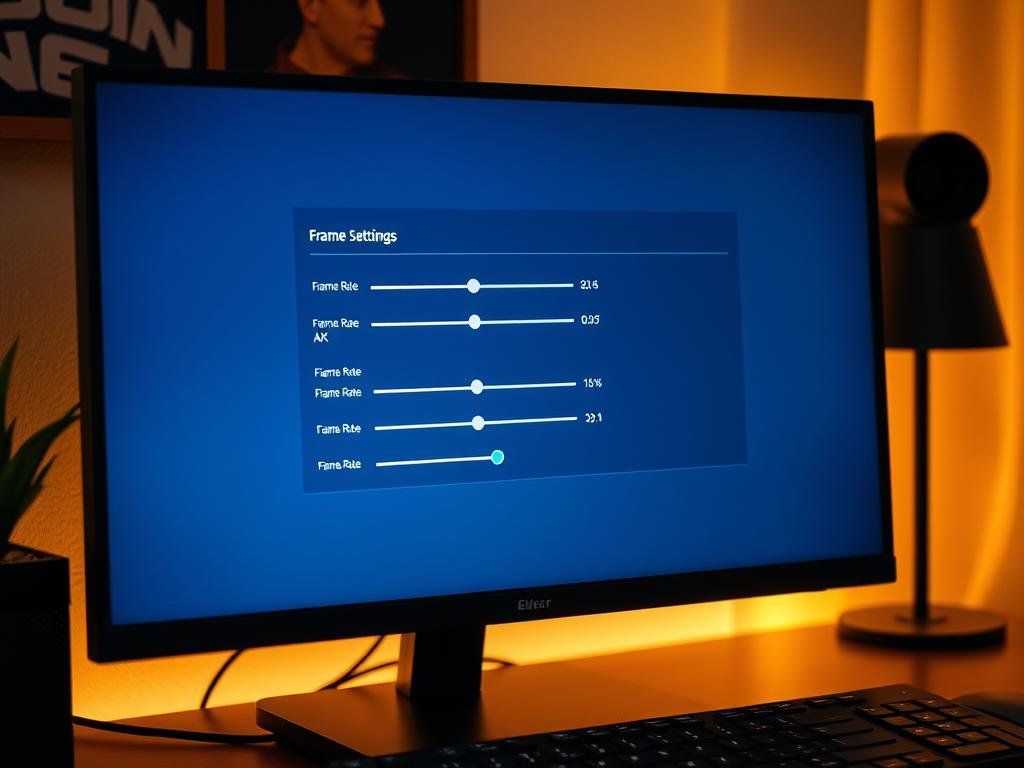
Sensitivity and Input Lag
Sensitivity settings can also affect your gameplay, mainly in input lag. Lowering sensitivity can sometimes cut down on lag between your actions and the game’s response. But, finding the right balance is key, as too low sensitivity can slow you down.
- Try out different sensitivity levels to see what fits your gaming style.
- Lowering sensitivity might help if you see a lot of input lag.
Motion Blur Options
Motion blur can change how your game looks. It makes games look more like movies but can blur fast scenes. Turning off or reducing motion blur can make your game clearer and more responsive.
“Disabling motion blur can make your gaming better, mainly in fast games.”
By tweaking these settings, you can cut down on gameplay lag and make your gaming better. It’s about finding the perfect balance for your system and gaming style.
Enhancing Your Hardware
Boosting your gaming performance is easy with better hardware. Investing in key parts can make your games run smoother and faster.
Upgrading Your GPU
Your Graphics Processing Unit (GPU) is key for great gaming. A new, powerful GPU can handle complex graphics and high frame rates better.
Look for a GPU that balances performance and power use. Check out portable gaming for the latest GPU tech.
Increasing RAM for Better Performance
Enough RAM is vital for smooth gaming. More RAM means your system can handle demanding games better.
At least 16 GB of RAM is good for most games. But, for tough games, 32 GB or more is better.
SSD vs. HDD for Game Loading Times
Storage type affects your gaming. Solid-State Drives (SSDs) load games much faster than Hard Disk Drives (HDDs).
| Storage Type | Loading Times | Overall Performance |
|---|---|---|
| HDD | Slower | Less responsive |
| SSD | Faster | More responsive |
Switching to an SSD cuts down loading times and makes your system more responsive.
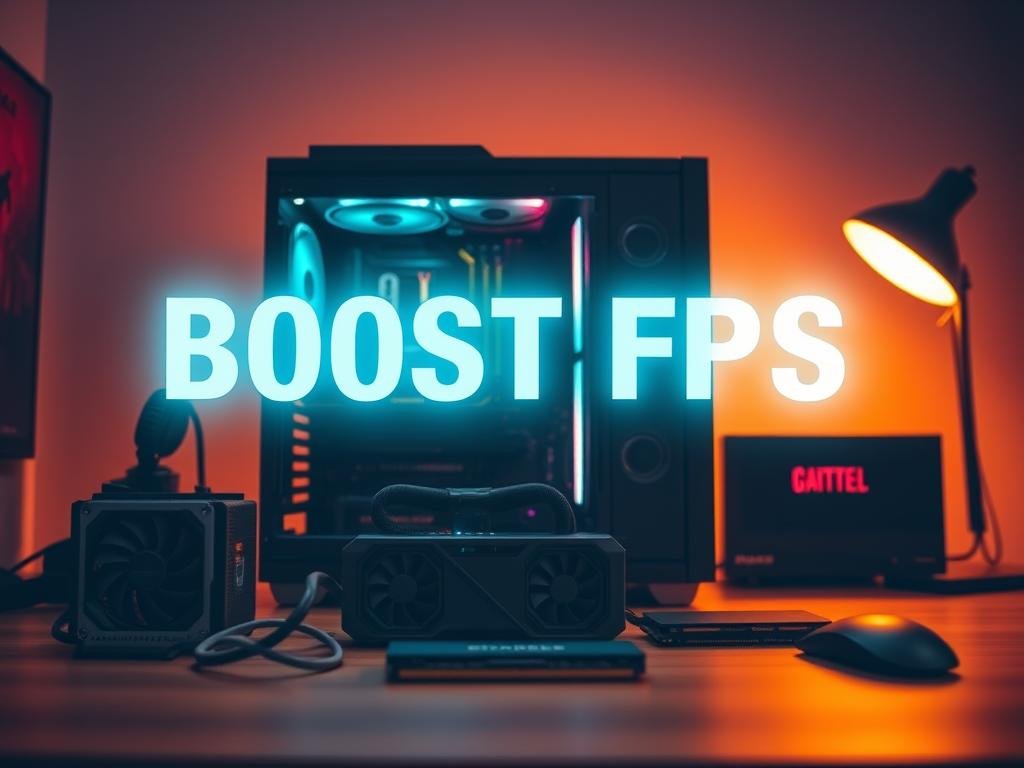
Upgrading your GPU, RAM, and switching to an SSD can reduce lagging in games. You’ll enjoy a better gaming experience.
Using Game Mode on Windows
Gamers can boost their gaming by using Windows Game Mode. It’s made to make your system run better for games. It stops background tasks from using up system resources.
Enabling Game Mode
To turn on Game Mode on your Windows, follow these steps:
- Press the Windows key + I to open Settings.
- Navigate to the “Gaming” section.
- Select “Game Mode” from the sidebar.
- Toggle the switch to turn on Game Mode.
Turning on Game Mode makes your gaming smoother. Microsoft says, “Game Mode ensures your system is ready for gaming by using resources better.”
“Game Mode is designed to help you play your games without interruptions.”
Benefits for Performance
Game Mode’s main perk is it improves gaming performance. It cuts down background app effects. This means less lag and a smoother game.
| Feature | Benefit |
|---|---|
| Resource Allocation | Optimizes system resources for gaming |
| Background Processes | Reduces interference from non-gaming applications |
| Gaming Performance | Enhances overall gaming experience |
To get the most out of gaming, try Game Mode with other tweaks. Update your graphics drivers and close apps you don’t need.
Keeping Your System Clean and Cool
A well-maintained system is essential for a smooth gaming experience. To improve gaming performance and avoid lag, regular upkeep is vital.
Keeping your system clean and cool is critical. Dust can cause overheating, leading to game performance issues. For more tips, check out AVG’s guide on boosting your gaming rig.
Importance of Regular Maintenance
Regular maintenance means checking for dust, ensuring good airflow, and watching temperatures. This helps avoid overheating and lagging in games.
Cleaning dust from fans and heat sinks improves airflow and keeps temperatures right. This simple step can improve gaming performance by stopping thermal throttling.
Cleaning Dust from Components
To clean dust, first shut down your computer and unplug it. Ground yourself to avoid static damage. Then, use compressed air to gently remove dust from fans, heat sinks, and other parts.
For more on preventing overheating, check Digital Vista Online’s tips. Some tips apply to gaming systems too.
By keeping your system clean and cool, you boost your gaming and extend your hardware’s life. Regular maintenance keeps your gaming rig running smoothly.
Seeking Professional Help If Needed
If you’ve tried everything and your games are slow or laggy, it’s time to get help. An expert can offer personalized advice to fix tough problems.
Identifying the Right Time for Expert Consultation
Think about getting a pro if you’ve tried updating drivers and tweaking game settings but lag persists. An expert can find and fix issues you can’t handle yourself.
Locating a Trustworthy Technician
Look for certified techs with gaming PC experience. Check online reviews and ask gaming communities for suggestions. A good technician can make your gaming smooth and fast.
FAQ
What causes lag in games?
Lag in games comes from many sources. Slow internet, old graphics drivers, and apps running in the background are common culprits. These can all slow down your game.
How can I improve my internet connection for gaming?
To boost your gaming internet, first check your speed. Try using a wired connection instead of Wi-Fi. Also, keep other devices from interfering to cut down on lag.
Why is it essential to update my graphics drivers?
Updating your graphics drivers is key for smooth gaming. Old drivers can cause lag and other problems. Regularly checking for updates is a must for a great gaming experience.
How can I optimize game settings for better performance?
To get better game performance, tweak your settings. Adjust graphics quality and resolution. Try different settings to find the right balance for a smoother game.
What is the impact of background applications on gaming performance?
Apps running in the background can hurt your game’s performance. They use up system resources. Closing these apps can free up resources and make your game run smoother.
How can I adjust in-game settings to reduce lag?
To cut down on lag, tweak your in-game settings. Try changing frame rate limits, sensitivity, and motion blur. Experimenting can help you find the best settings for your system.
Can upgrading my hardware improve gaming performance?
Yes, upgrading your hardware can make a big difference. A new GPU, more RAM, and an SSD can all boost your game’s performance. This can help reduce lag and improve your gaming experience.
What is Windows Game Mode, and how can it help?
Windows Game Mode is a feature that helps your games run better. It stops background apps from slowing down your game. Turning on Game Mode can make your games run smoother.
Why is it essential to keep my system clean and cool?
Keeping your system clean and cool is important for gaming. Regular maintenance, like dusting, can prevent overheating. This helps avoid damage to your hardware and keeps your games running smoothly.
When should I seek professional help for persistent lag or performance issues?
If you’ve tried everything and your game is slow, it’s time to get help. A professional can offer personalized advice and help fix complex problems.
